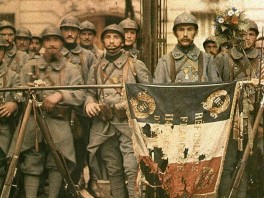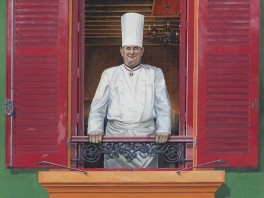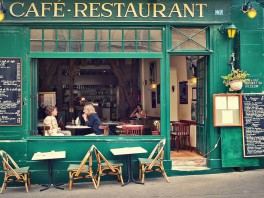France: a country of diversity and emotion
France is not one destination — it’s many.
Each region has its soul: Alsace with its half-timbered houses, Brittany with its wild coast, Burgundy with its wines, and Paris with its light.
Our guides take you from famous landmarks to hidden gems, from villages to vineyards, to experience the real France.
What You’ll Find Here
-
Weekend trips and itineraries across France
-
Regional guides: Brittany, Alsace, Provence, Corsica, Vendée...
-
Cultural walks through castles, villages, and UNESCO sites
-
French gastronomy: recipes, local markets, wines, and traditions
It is a very old tradition to give gifts to loved ones at the end of the year. The Romans were already doing it more than 2,000 years ago. Santa Claus is even more recent. Before him, others were responsible for giving gifts to children.
It's the emblem of the end-of-year festivities, and Christmas in particular: the Christmas tree. Every year, 6,700,000 of them are sold in France, of which almost 6,000,000 are natural. And yet the fir hasn't always been so popular. They flopped at Versailles in the 18th century, before becoming a festive icon in the 19th century. A surprising consequence of a war and the arrival of many Alsatians in the capital. Monsieur de France tells the story.
Christmas in France
France
Why Are There Three Wise Men? Bible, Meaning, Tradition

Jérôme Prod'homme
Why do people speak of three Wise Men when the Bible never gives a precise number? This idea developed over time through tradition, symbolism, and the famous gifts offered to the infant Jesus.
article updated on December 18, 2025
Although it's not officially known who invented meringue, and the Swiss believe they are the originators, all leads back to France, where the first written recipes for meringue can be found as early as the 17th century. Appreciated by Louis XV's wife, Queen Marie, and adored by Marie Antoinette, meringue is a delicacy that's easy enough to make, thanks to Monsieur de France's recipe.
All Saints’ Day (Toussaint) in France is celebrated on November 1st and honors all recognized saints. Rooted in Christian tradition, it has also become a time of family remembrance, when people visit cemeteries and maintain long-standing cultural customs.
article updated on December 16, 2025
In France, November 11 is a special day. It commemorates the end of World War I on November 11, 1918, and pays tribute to all the soldiers who died for France. Monsieur de France tells you the story and meaning of this day of remembrance, which is deeply rooted in French culture.
Chaque village de France possède un monument aux morts. Pour les voyageurs étrangers, ces pierres silencieuses racontent une histoire universelle : celle d’un pays profondément marqué par la guerre, mais attaché à la paix, au souvenir et à la reconnaissance envers ceux qui ont donné leur vie.
It's a title found only in France: "Meilleur Ouvrier de France". It's a title that takes immense effort to achieve, and rewards the very best in 230 different trades, even if the most famous are often in the world of Gastronomy. The title of M.O.F., which has been awarded to some of the greatest names in the world, is truly unique in France, but is rarely awarded. Monsieur de France reminds us who these "meilleurs ouvriers de France" are, recognizable by their red, white and blue collars.
France is also the postcard of the small neighborhood or village bistro, the Parisian café and small or large restaurants. This is still true today, even if the number of bistros is decreasing. There were a little more than 38,000 "drinking establishments" in France in 2022 (including bistros and cafés) and a little more than 92,000 "traditional" restaurants, i.e. not including fast food restaurants. There are differences between the different establishments, which Monsieur de France reminds us, even if there is a huge common point between them: a certain art of living...
Captains or shipowners, sometimes both, privateers are also part of French history. Armed for the "race", hence the name of privateers, they scoured the seas to attack the enemy ships of France and some became famous like Surcouf, Dugay-Trouin or Jean Bart. Discover these daring men who should never be confused with pirates, who fought with the authorization of the king...









